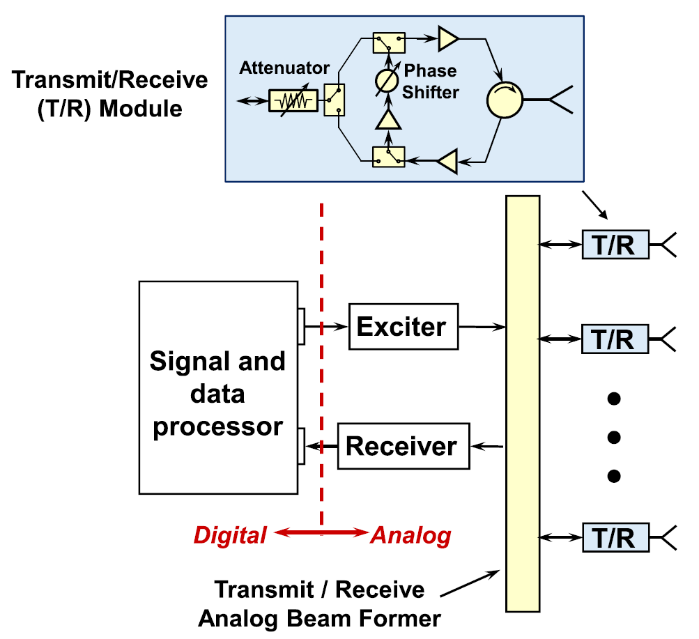General Introduction of YLC-2VB 3D Long Range Air Surveillance Radar
1 General Introduction
In future wars, radar is the main target detection and battlefield awareness equipment. At the same time, the battlefield will have a complex geographical and electromagnetic environment, as well as the enemy's electronic countermeasures. This situation requires a radar with excellent electrical performance, especially the detection of medium and long range targets with high speed and high mobility, excellent electronic countermeasure performance, high reliability, and the ability to switch on and off quickly, so as to carry out early warning of threat targets and timely know the deployment of enemy forces.

YLC-2VB radar is the latest version with new designed digital phased array technology system of YLC-2V radar, which is a long range radar meeting the operational requirements of future wars.
YLC-2VB radar operates in S band and is a ground-based 3D intelligent radar. It adopts full digital phased array, full solid state, full coherence, pulse compression, and other advanced technologies. It has excellent performance, high reliability and high automation. It is mainly used for detecting medium/high altitude maneuvering targets, and target tracking. The radar provides the battle command system and the air force with complete information, such as azimuth, elevation and range. It can be used as the backbone surveillance radar in air situation detection radar network. Its auxiliary tactical function is to provide radar information for air traffic control at airport. It can monitor the airspace within 7 days * 24 hours and send the air situation information (radar detection information) to the superior command post through wired or wireless communication.
The main operational missions of YLC-2VB are:
a.Local theater air surveillance and air force operational indication;
b.The backbone radar for surveillance of air situation in important areas;
c.Target indication radar for ground air defense forces;
d.Air traffic surveillance radar.
YLC-2VB radar is mainly used to detect aircraft, attack aircraft, bombers, electronic fighters, reconnaissance aircraft, transport aircraft, civil aircraft and other air targets.

2 Features of radar
2.1 Technical system
YLC-2VB radar adopts the new designed digital phased array technology system, combination system of electronic phase scanning and azimuth mechanical scanning, active phased array antenna, multi-beam elevation measurement function, distributed full-solid-state transmitter, full-coherent pulse Doppler, full digital multi-beam synthesis, digital pulse compression and three-dimensional air target surveillance functions.
The difference between a traditional phased array radar and a digital phased array is whether the formation of scanning beams is in analog ways or digital ways. A traditional phased array radar uses analog devices, such as phase shifter, attenuator and microwave synthesis network, to generate scanning beam. However, a digital phased array radar is based on a phased array antenna in which transmitted beams are generated digitally at each T/R module and the received energy is also digitized at each T/R module. This allows transmit and receive beams of arbitrary weighting and shape to be formed in the digital domain in any direction. In addition, it readily allows forming multiple simultaneous receive beams, their number and instantaneous bandwidth, and dynamic range being limited only by the data converters and the digital hardware capacity and power consumption.

(a)Simplified block diagrams of analog phased array

(b)Simplified block diagrams of digital phased array (do not require phase shifters, variable attenuators or additional amplification in the T/R module.)
Fig 1. Comparison between traditional phased array and digital phased array
2.2 Characteristics of radar system
YLC-2VB radar is equipped with advanced technology to meet the operational requirements of 3D surveillance.
(1) Multi-beam phase scanning technology;
(2) Wide-band low-sidelobe antenna technology;
(3) High-power distributed full-solid-state transmitting and receiving module;
(4) High-speed multi-channel multi-function real-time signal processing technology, including DMTI, DMTD, digital pulse compression, clutter map, CFAR, which enable the radar to obtain good anti-jamming capability;
(5) Full-digital multi-beam synthesis technology;
(6) Good low-altitude target detection capability and high measurement accuracy;
(7) High resolution, able to identify flying targets;
(8) Excellent anti-interference capability due to the following countermeasures, including:
Burst-to-burst adaptive frequency agility;
Pseudo random frequency hopping, adaptive frequency frequency agility, manual frequency setting, and etc.;
Side-lobe blanking and cancellation technology;
Energy concentration technology aiming at important target(burn-through);
Same frequency asynchronous interference countermeasures, narrow pulse interference elimination and other techniques;
Other anti-interference capabilities, including anti-cloud/rain clutter, blocking interference, chaff interference, etc..
(9) High reliability and stability;
(10) High ease of use;
(11) Good anti-radiation missile performance.
3 Main functions
3.1 Target detection and tracking
This radar can monitor, detect and track aircraft in real time, and obtain target parameters, including: azimuth, range, elevation (altitude), speed and friend or foe information attribute.
3.2 Information reporting
YLC-2VB radar can report radar reconnaissance intelligence (air condition information) for air targets and external jamming information to senior command posts.




